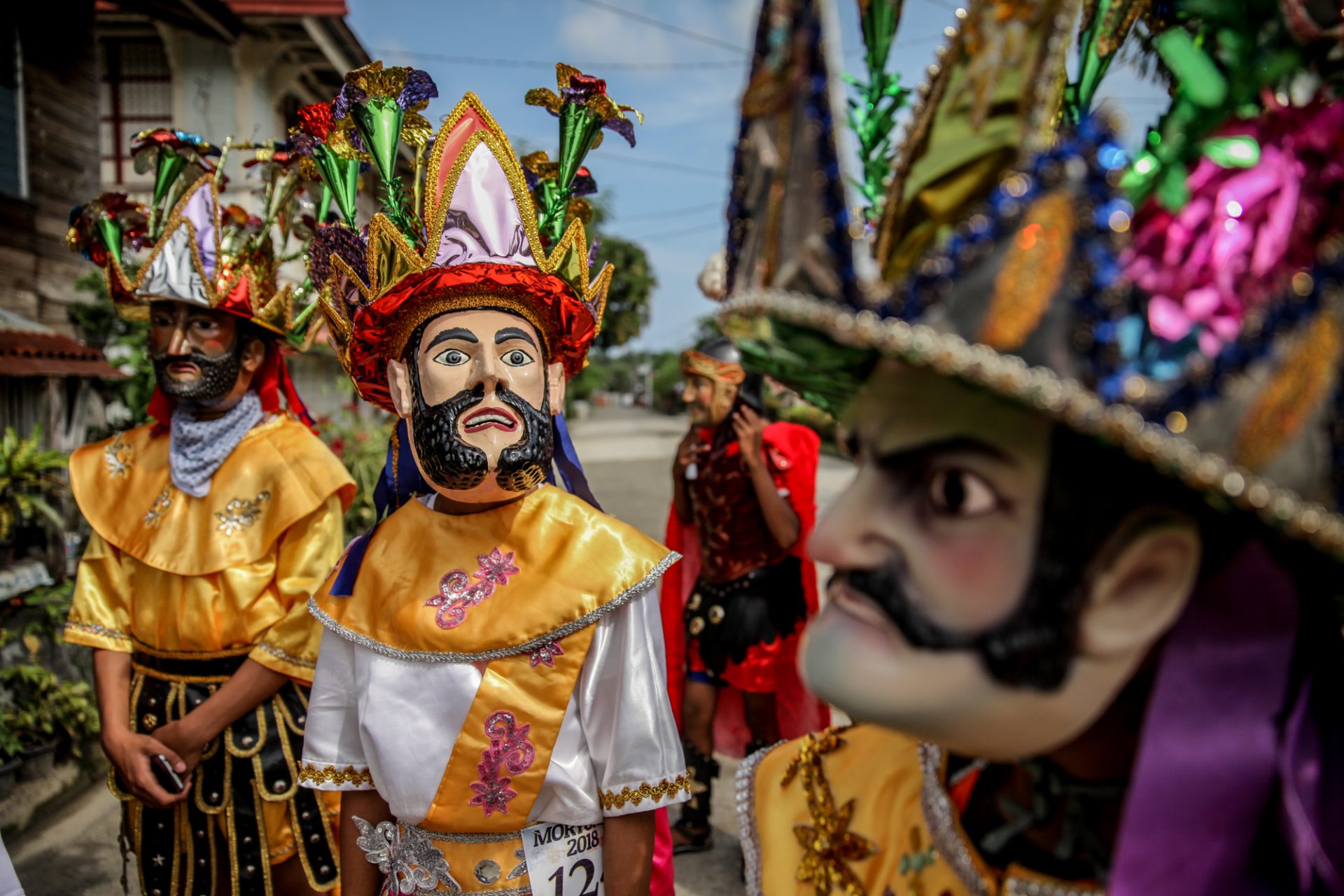Tradition and people’s faith have kept the observance of the Holy Week in predominantly Catholic Philippines alive, and colorful.
The sleepy island province of Marinduque, for instance, comes to life every year to showcase art, culture, and people’s faith in a weeklong festival of masks and costumes dubbed the “Moriones.”
During the Holy Week, the island turns into a garrison of “Roman soldiers,” or “Moriones,” that attract not only devotees but thousands of tourists from around the country and abroad.
The festival gathers local residents from all ages and walks of life into a single stage where they fulfill the vow of a Roman soldier, Longinus, who witnessed the resurrection of the Lord.
For the people of the province, the event is not only a display of the intricacies of Roman-inspired costumes, but is also a fulfilment of a religious vow of sacrifice.
“This is a practice that is handed to us for over two centuries now,” said Raymund Nepumuceno, who once led the Legions of Marinduque, one of the three Morion groups in the province.
“It is a lifetime commitment to God,” he said in an earlier interview, adding that wearing a Roman centurion’s helmet, cape, breast plate, leggings and weapons brings a sense of pride.
“Walking with those defines the meaning of a Morion’s sacrifice,” he said.
A costume that includes an armor weighs at least 20 kilograms. A Morion soldier must also first learn to walk with the heavy “caligae” or military boots. For new Morions, a little unevenness of the ground can be dangerous. One must learn to control one’s steps.
Looking through the mask, with only two half-centimeter holes for eyes, is a challenge especially in the evening. With the helmet, a Morion’s sense of hearing is also limited. For new Morions, breathing is another difficulty that one must overcome.

“It’s not as easy as it looks. People look at the glamour of our costume, but behind the mask is a struggle and a prayer that God gives us the grace to survive,” Nepomuceno said.
Alfredo Maglakas, a Morion for over 40 years, said one can have the best costumes “but without faith it is nothing.”
When asked how he endured the grueling Morion’s life, he said “Life is harder if God forsakes us,” adding that the “Moriones” is “a festival of faith.”
The Moriones festival traces its beginnings to 1807 when Padre Dionisio Santiago, parish priest of Mogpog town, organized a group of players to re-enact the crucifixion of Jesus.
The staging of the play evolved around Roman centurion Longinus, who was assigned to the execution of Christ in Calvary. It was Longinus who supposedly thrust a lance into the side of Christ and caused the blood to flow into his blind left eye.
Longinus supposedly also served as officer of the guards outside Jesus’s tomb and witnessed the resurrection.
Tradition says he was the one who rushed into town to spread the news, which prompted the High Priest and Scribes to order for his execution.
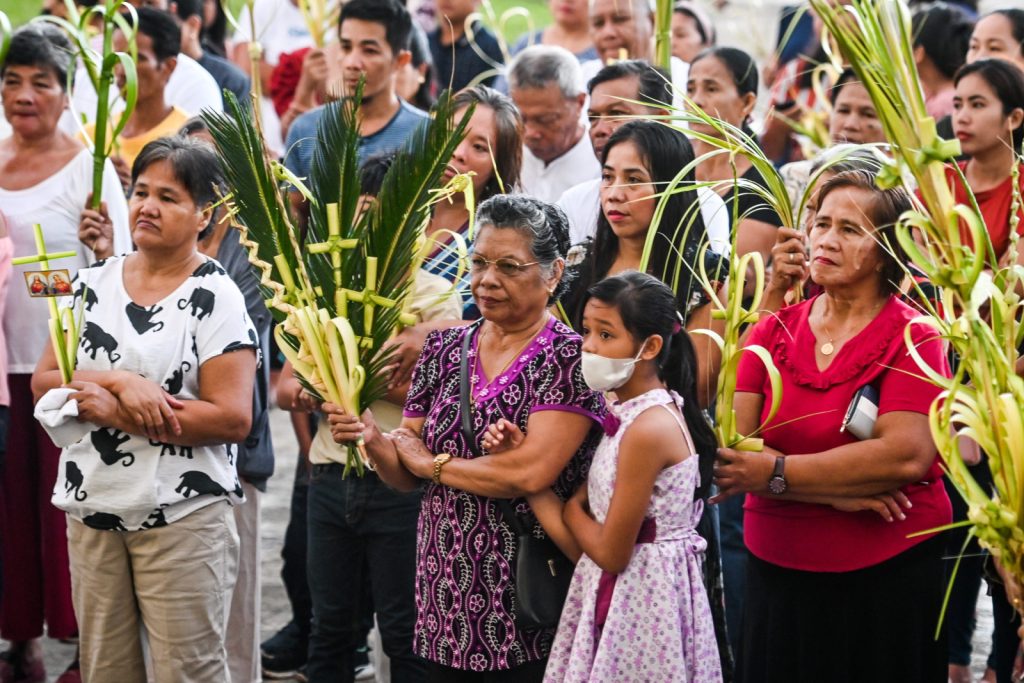
Religious rituals
Holy Week is also the time of year when Filipinos troop to the provinces for a long vacation.
The week kicks off bright and early on Palm Sunday morning when Catholics carry palm fronds to be blessed by the priest.
The fronds are later taken home and placed on front doors or windows supposedly to ward off evil spirits.
For many Filipinos, the Easter exodus starts straight after the blessing of fronds. Many take extra time off work to enjoy a weeklong vacation.
Holy or Maundy Thursday and Good Friday are national holidays, but many companies also give employees Wednesday off.
Maundy Thursday starts the Triduum, when Catholics observe the last Mass before Easter or the Institution of the Lord’s Supper. Priests also renew their sacerdotal vows in an elaborate ceremony that attracts thousands.
The washing of the feet of the apostles is reenacted in many churches, followed by the procession of the Blessed Sacrament to the “Altar of Repose.”
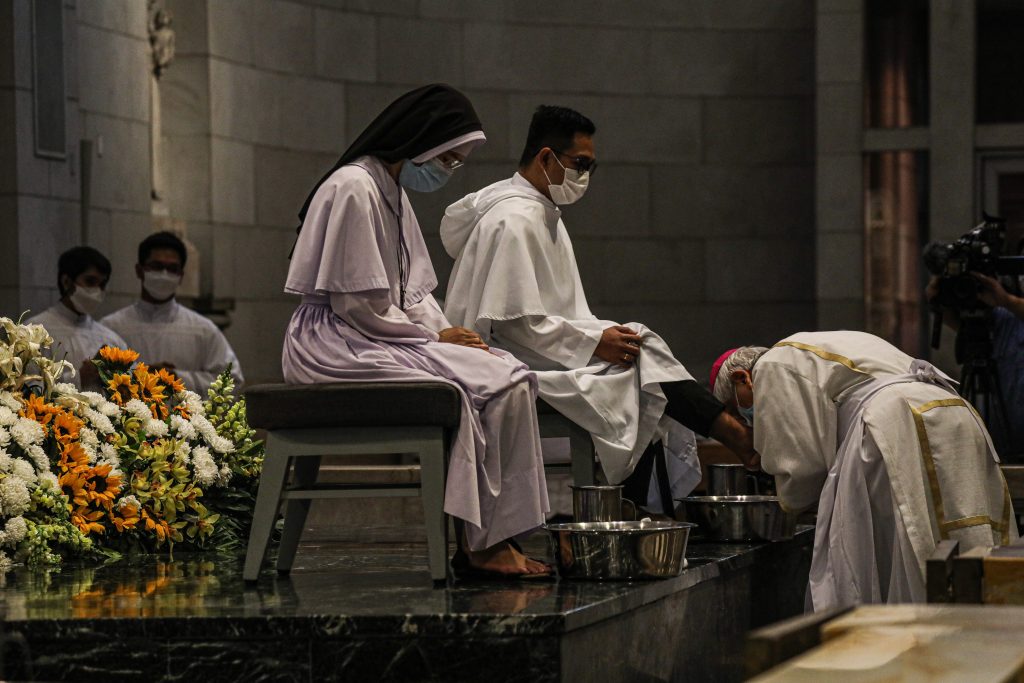
The traditional Visita Iglesia or church visit starts after Maundy Thursday rituals. People visit at least seven churches around town, supposedly to meditate on the Way of the Cross.
The trip is also a good excuse for families to go sightseeing.
Because the Blessed Sacrament is exposed on the Altar of Repose, many people stay out all night, some praying inside churches, many outside, enjoying the summer breeze in their town square.
Good Friday observance is usually observed with the Way of the Cross, the Siete Palabras or Seven Last Words, delivered by the best and most eloquent speakers, including politicians, actors, and priests.
A passion play called the Senakulo is staged in the afternoon, followed by a procession of devotees and flagellants who sometimes have themselves nailed on crosses, supposedly as expressions of penance.
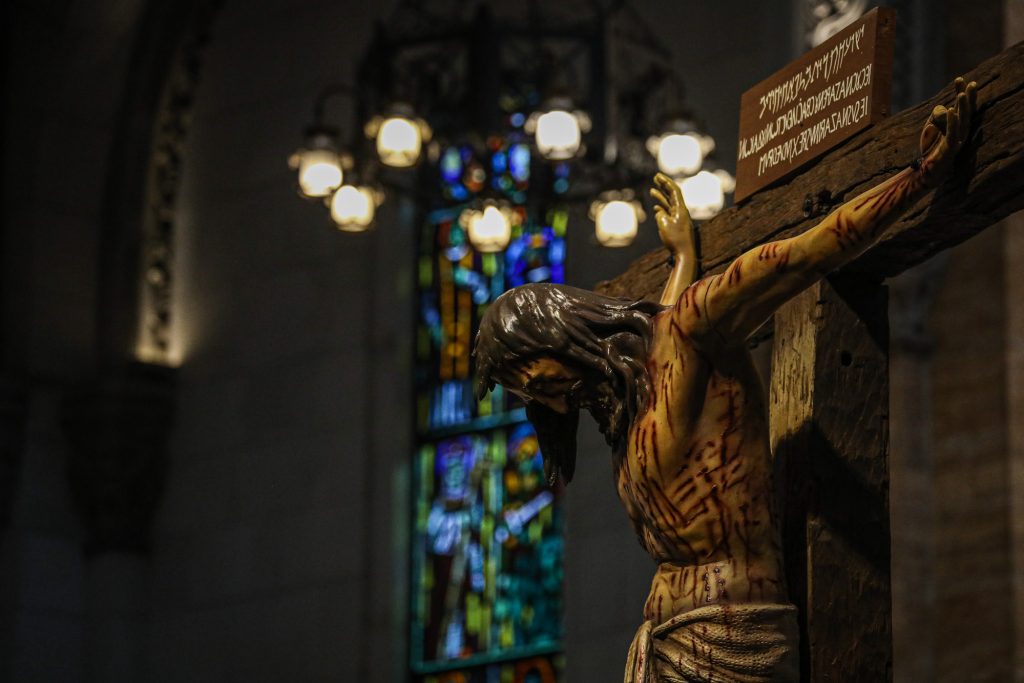
Preparing for Easter
A weeklong, round-the-clock, chanting marathon of the narrative of Jesus’ life, passion, death, and resurrection ends on Good Friday. In the evening, a funeral procession involving the image of the dead Christ is held.
Holy Saturday is known as “Black Saturday” or Sabado de Gloria. Jesus is dead so people celebrate. An early evening Mass is held for the Easter Vigil.
Easter Sunday usually starts with the traditional dawn salubong or meeting of the resurrected Jesus and his mother. Life-size statues of the Resurrected Christ and the Virgin Mary are brought in separate processions to come together at a designated area, usually in front of a church.
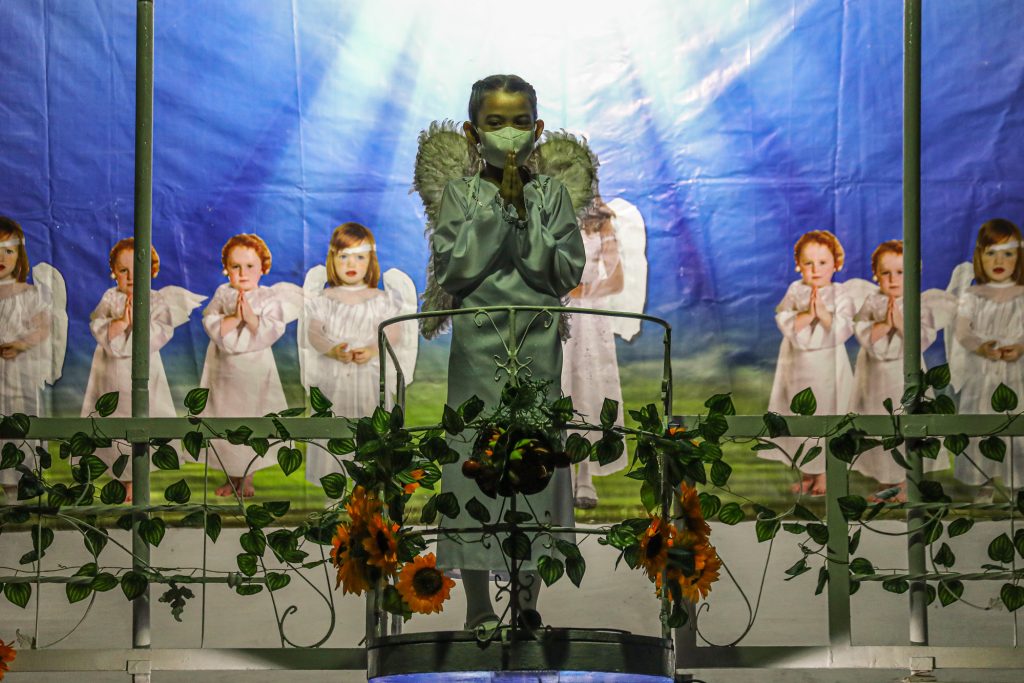
For this procession, the Virgin Mary usually has a black veil that is lifted by an “angel” suspended in midair above the images.
When the face of the Virgin is revealed, signifying the end of her grief, the angel sings the Regina Coeli in Latin. Church bells peal while the crowd erupts in joyous celebration.
In some parishes an image of Judas is hanged nearby and burned after the salubong, to signify the apostle’s betrayal of Jesus.
From there the celebration continues, with singing, dancing and picnics. It’s a fine way for fun-loving, faithful Filipinos to cleanse their souls. – with previous reports from Eloisa Lopez and Jun Pasaylo

